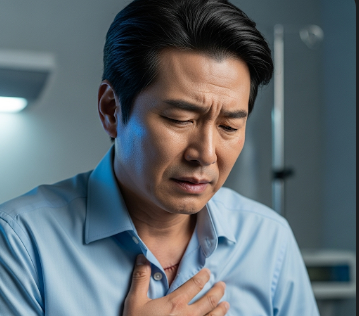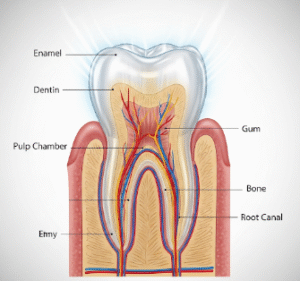Overview
Heart valve disease is a condition where one or more of the four valves of the heart—the aortic, mitral, pulmonary, or tricuspid valve—do not function properly. These valves regulate blood flow through the heart’s chambers and ensure blood moves in the correct direction. When valves are damaged or diseased, the heart must work harder, which can eventually lead to complications such as heart failure, arrhythmias, or even sudden cardiac arrest.
This disease is relatively common, particularly in older adults, but it can affect individuals of all ages depending on underlying causes. Some patients live with mild valve disease for years without symptoms, while others experience rapid progression requiring urgent treatment. Thanks to advanced diagnostic methods and surgical techniques, especially in medical hubs like South Korea, most patients can receive effective treatment and return to a good quality of life.
What is Heart Valve Disease?
The human heart has four valves:
- Aortic valve
- Mitral valve
- Tricuspid valve
- Pulmonary valve
These valves open and close with each heartbeat, ensuring one-way blood flow. Heart valve disease occurs when one or more valves:
- Fail to open fully (stenosis) – narrowing restricts blood flow.
- Do not close completely (regurgitation or insufficiency) – blood leaks backward.
- Have both narrowing and leaking (mixed valve disease).
The severity ranges from mild dysfunction with no symptoms to severe disease requiring surgery.
Symptoms
Symptoms depend on the valve affected and the degree of dysfunction. Some people may remain asymptomatic for years, while others develop noticeable signs quickly.
Common symptoms include:
- Shortness of breath, especially during exertion or when lying flat.
- Fatigue or weakness.
- Chest pain or pressure.
- Heart palpitations or irregular heartbeat.
- Swelling in ankles, feet, or abdomen (edema).
- Dizziness or fainting spells.
- Reduced ability to exercise or perform daily activities.
Causes
Heart valve disease can result from congenital abnormalities, age-related changes, or acquired conditions.
Major causes include:
- Congenital valve defects – present at birth, such as bicuspid aortic valve.
- Rheumatic fever – an untreated strep throat infection that damages valves.
- Endocarditis – infection of the heart lining and valves.
- Age-related degeneration – calcification or thickening of valves.
- Other heart conditions – such as high blood pressure, coronary artery disease, or heart attack that strain the valves.
- Radiation therapy – to the chest area, sometimes damaging valves.
Risk Factors
Several factors increase the likelihood of developing heart valve disease:
- Older age – degeneration is more common after age 60.
- History of rheumatic fever.
- Congenital heart defects.
- Infections such as infective endocarditis.
- Other heart diseases (heart failure, cardiomyopathy, coronary artery disease).
- Chronic conditions like high blood pressure, diabetes, or high cholesterol.
- Lifestyle habits such as smoking or lack of physical activity.
Complications
If left untreated, heart valve disease can cause severe and sometimes life-threatening complications:
- Heart failure – when the heart cannot pump enough blood to meet the body’s needs.
- Stroke – due to blood clots forming in damaged valves.
- Arrhythmias – abnormal heart rhythms, including atrial fibrillation.
- Infective endocarditis – increased risk of infection in abnormal valves.
- Sudden cardiac death – in severe untreated cases.
Prevention
While not all cases of heart valve disease can be prevented, certain measures can reduce risks and slow progression:
- Treat infections promptly – especially strep throat, to prevent rheumatic fever.
- Good oral hygiene – reduces risk of endocarditis.
- Healthy lifestyle – balanced diet, regular exercise, no smoking, and limited alcohol.
- Manage chronic conditions – control high blood pressure, cholesterol, and diabetes.
- Regular check-ups – especially for people with known heart murmurs or congenital valve issues.
Treatment Options in Korea
South Korea is globally recognized for excellence in cardiology and cardiac surgery, offering cutting-edge technologies, advanced surgical techniques, and comprehensive care.
1. Diagnosis & Monitoring
- Echocardiography (TTE, TEE) – main diagnostic tool for valve function.
- Electrocardiogram (ECG) – detects arrhythmias.
- Chest X-ray – shows heart enlargement.
- Cardiac MRI/CT – advanced imaging for detailed assessment.
- Cardiac catheterization – measures pressures inside heart chambers.
Korean hospitals use AI-assisted imaging and 3D echocardiography for more accurate diagnoses.
2. Medications
Medications cannot cure valve disease but help manage symptoms and prevent complications. Commonly used drugs include:
- Diuretics – reduce fluid buildup.
- Beta-blockers & calcium channel blockers – control heart rate and rhythm.
- ACE inhibitors / ARBs – reduce blood pressure and heart strain.
- Anticoagulants – prevent blood clots, especially in atrial fibrillation.
3. Minimally Invasive Procedures
South Korea is at the forefront of minimally invasive heart procedures, which reduce recovery time and hospital stays.
- Balloon valvuloplasty – used to widen narrowed valves, especially the mitral valve.
- TAVR (Transcatheter Aortic Valve Replacement) – non-surgical replacement of the aortic valve via catheter.
- MitraClip procedure – catheter-based repair for mitral regurgitation.
4. Surgery
When valve disease is severe, surgery may be required. Korean hospitals are renowned for advanced heart surgeries with high success rates.
- Valve repair surgery – preferred when possible; preserves patient’s own valve.
- Valve replacement surgery – using mechanical or biological prosthetic valves.
- Mechanical valves: Long-lasting, but require lifelong anticoagulation.
- Biological valves: Made from pig, cow, or human tissue, last 10–20 years.
- Minimally invasive cardiac surgery (MICS) – smaller incisions, less pain, quicker recovery.
- Robotic-assisted heart surgery – available in leading hospitals, offering high precision.
5. Rehabilitation & Long-Term Care
- Cardiac rehabilitation programs help patients regain strength and prevent future complications.
- Lifestyle management with personalized diet and exercise plans.
- Regular monitoring with echocardiograms to ensure repaired/replaced valves function well.













